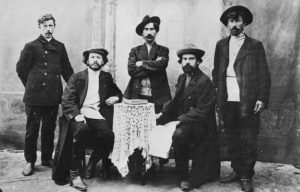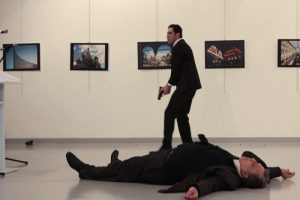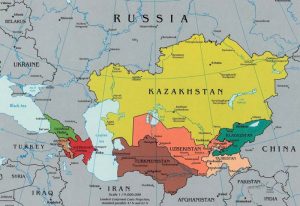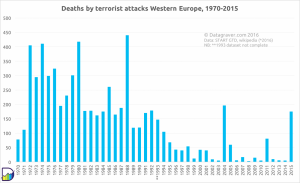Brian M Downing
This week a bomb exploded on a train in St Petersburg, killing eleven people and wounding many more. Initial reports point to a suicide bomber. It’s not clear what his motives were or if he was part of a network.
 Terrorism has struck Russia often in the past decade – in the Caucasus, Volgograd, and even Moscow. Looking back into the late nineteenth century, it could be said that modern terrorism was born in Russia when young people became embittered by the absence of reform and turned to violence. Their most notable accomplishment was the 1881 assassination of Tsar Alexander II in St Petersburg.
Terrorism has struck Russia often in the past decade – in the Caucasus, Volgograd, and even Moscow. Looking back into the late nineteenth century, it could be said that modern terrorism was born in Russia when young people became embittered by the absence of reform and turned to violence. Their most notable accomplishment was the 1881 assassination of Tsar Alexander II in St Petersburg.
Russia is a strong, authoritarian state. It dedicates vast resources to internal security – a broad category that has been a central concern since the early tsars. Nonetheless, the country is facing terrorist threats from several sources, not all of them obvious ones.
Vengeance from Syria
Russia’s intervention in Syria secured the Assad government and enabled it to reconquer most of the western provinces. While it signals Russia’s return to great power status, and its willingness to use harsh force where rivals will not, the move brings risks.
Assad’s successes have been made possible by Russian airpower. A formula is clear. Russian and Syrian bombs devastate a neighborhood or entire city and force the rebels to retreat. Alternately, rebels fight to the last as Syrian ground troops move in.
The airstrikes have been especially brutal, far more so than anything seen in recent decades. The campaign on Aleppo over the last several months intensified hostility toward Assad and his chief ally. The same can be said of the recent use of sarin gas on the civilians of Idlib.
The desire for vengeance is strong, all the more so as Russian intervention has been in support of a Shia government amid a time of deepening sectarian hatred. Russian airstrikes support Hisbollah, the IRGC, and Shia militias recruited and trained by Iran.
 ISIL, the FSA, al Nusrah, Ahrar al Sham, and lone wolves will strike back at Russian targets in Syria and elsewhere in the Middle East. One lone wolf has already assassinated the Russian ambassador to Turkey, denouncing the destruction of Aleppo as he fired and as he fell. The ability to attack within Russia is limited, but there are individuals and groups inside the country with axes to grind.
ISIL, the FSA, al Nusrah, Ahrar al Sham, and lone wolves will strike back at Russian targets in Syria and elsewhere in the Middle East. One lone wolf has already assassinated the Russian ambassador to Turkey, denouncing the destruction of Aleppo as he fired and as he fell. The ability to attack within Russia is limited, but there are individuals and groups inside the country with axes to grind.
Muslim autonomy
Centuries of conquest brought Muslim lands into the Russian empire. Putin’s reconquest of the Crimea in 2013-14 has done the same. Chechnya and Dagestan, two Muslim regions in the Caucasus, have intermittently struggled against Moscow’s rule.
Overt opposition has been brutally suppressed and local bosses are given large sums to keep their people in line. But hostility continues. Several thousand Caucasus Muslims fight with al Qaeda and ISIL in Syria and Iraq. Many will try to return home in coming months as Mosul and Reqqa become untenable. All of them will have memories of Russian actions.
Crimean Tatars resent their forced reintegration into the country that deemed them Nazi sympathizers and scattered them across the Soviet Union. Only in recent years have they been able to trickle back to their traditional homeland.
Major cities
 The Muslim population is not confined to pockets along the vast periphery. Over the years hundreds of thousands of them have sought better opportunities in the cities of western Russia. Moscow alone has over 1.5 million Muslims – about nine percent of the total population. Many are Tatars, Azaris, and various groups from the ‘Stans of Central Asia, where Islamist militancy is on the rise.
The Muslim population is not confined to pockets along the vast periphery. Over the years hundreds of thousands of them have sought better opportunities in the cities of western Russia. Moscow alone has over 1.5 million Muslims – about nine percent of the total population. Many are Tatars, Azaris, and various groups from the ‘Stans of Central Asia, where Islamist militancy is on the rise.
Urban Muslims face routine condescension and harassment. Prayer at the workplace brings reproving stares. Security forces keep watch on mosques and require the faithful to pass through metal detectors before they can pray. Resurgent nationalism in Russia has emboldened street hoods to attack those with veils and long beards.
The projects and ghettoes of Western Europe have produced lone wolves, small cells, and far-reaching networks – some with ties to IISL or inspired by it. Russian urban centers will do the same. They may already have. The chief suspect in the St Petersburg bombing immigrated from Kyrgyzstan.
Russian youth
 Terrorists, we are repeatedly told, are not always Muslims. Timothy McVeigh in Oklahoma and Anders Breivik in Norway have ably demonstrated this. The Baader-Meinhof Gang and the Red Brigades killed more Europeans in the seventies than Islamist militancy has in the past decade. Nihilistic European youths, purporting to act in the name of the people, still hold the grim record.
Terrorists, we are repeatedly told, are not always Muslims. Timothy McVeigh in Oklahoma and Anders Breivik in Norway have ably demonstrated this. The Baader-Meinhof Gang and the Red Brigades killed more Europeans in the seventies than Islamist militancy has in the past decade. Nihilistic European youths, purporting to act in the name of the people, still hold the grim record.
In the nineteenth century Russian youth rallied around the ideals of populism and reform. Disillusioned by public apathy and angered by their country’s reactionary policies in the world, they devoted themselves, wholly and savagely, to violence and terror. Herzen and Chernyshevsky fell out of favor. Nechaev and Lenin took their place.
Most Russian youths today enjoy the material prosperity and power prestige that has come under Putin’s rule. Others, if only a small percentage, have seen the prospects of political reform recede to nothingness under him, as opponents are harassed, imprisoned, or murdered. They may be inspired by examples from the past and present, and turn to violence in order to do the people’s will.
Copyright 2017 Brian M Downing
Brian M Downing is a national security analyst who has written for outlets across the political spectrum. He studied at Georgetown University and the University of Chicago, and did post-graduate work at Harvard’s Center for International Affairs.